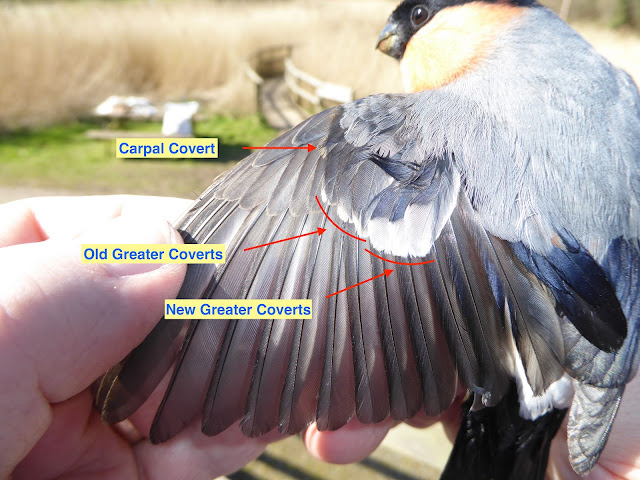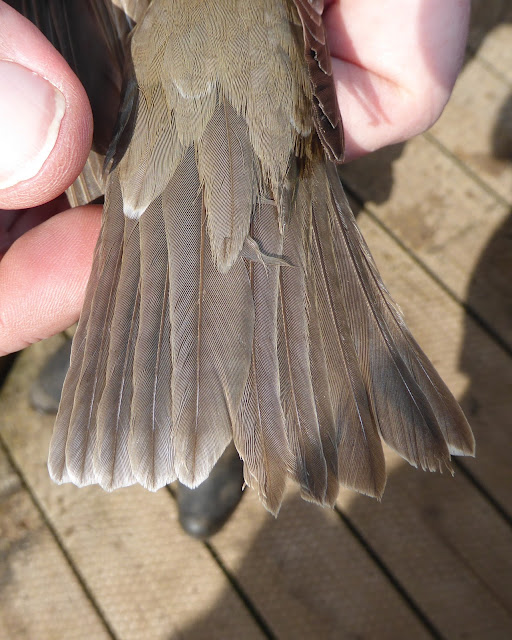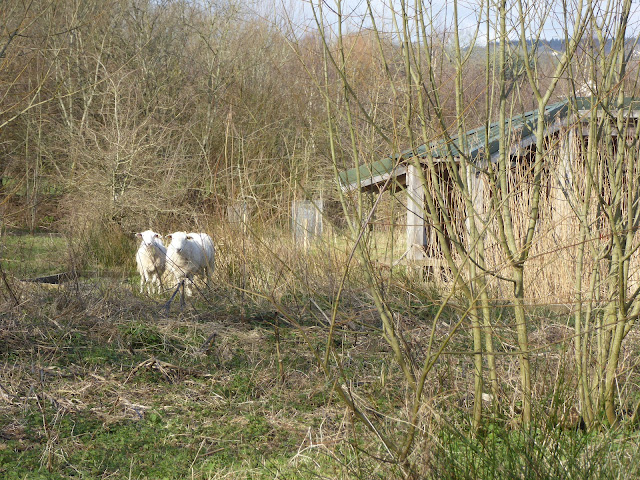Friday 18th saw the team out at Seaton Wetlands once more for a mist netting session. As is usual at this time of year we caught relatively few birds, but took the opportunity to stocktake some nets and cut and refresh net rides.
 |
| Examining nets during a quiet moment |
19 birds were processed. Among the more interesting birds was a chiffchaff, probably newly arrived from its winter quarters. A number of these birds were singing in the beautiful weather we had on Friday. Unfortunately the bird was released without photographs! Here are some of the team, however, processing some birds.
 |
| Newer members under instruction in the Discovery Hut |
Bullfinches were around in good number and we caught a few of these birds including these two. The male, with the attractive red chest and the female, less ostentatious but very smart nonetheless. Both were birds hatched last summer, which we can tell from differences in the age of feathers in the greater coverts (small feathers immediately above the flight feathers closer to the body of the bird). These show newer fresher feathers with broad white tips and a more glossy blue black colour compared with older feathers (a more grey/browner colour with less distinct white tips often buffish brown) which are found further out on the wing. These older feathers grew when the bird hatched last summer. The newer feathers are replacement of these older feathers when the bird moulted feathers in late summer/early autumn.
 |
| Male Bullfinch |
 |
| Male Bullfinch wing showing the differently coloured greater coverts. The carpal covert also has a buff tip, this would be white on an adult bird. |
 |
| Female Bullfinch |
 |
| Female Bullfinch showing differently coloured greater coverts & buff tipped carpal covert. |
A rather more common bird for us to catch is the Blue Tit. We ring birds that nest in the nest boxes around the Wetlands, and we caught a Blue Tit during the session which was originally ringed in one of the nest boxes nearby in 2018. Coming up to the end of its 5th year, this is a good age for a Blue Tit. Blue Tits rarely move far and we have caught the bird a few times since first ringing. Once in 2018 and three times in 2019, but then a big gap until 04/03/2022 and now two weeks later. One wonders where it has been hiding between December 2019 and now!
Overall then a productive morning, even if the number of birds was relatively low.
Ringed | Re-trapped | |
Blackbird | 1 | 3 |
Blue Tit | 1 | 2 |
Bullfinch | 3 | |
Chaffinch | 1 | |
Chiffchaff | 1 | |
Great Tit | 1 | 2 |
Robin | 1 | 1 |
Wren | 2 | |
Totals | 11 | 8 |









